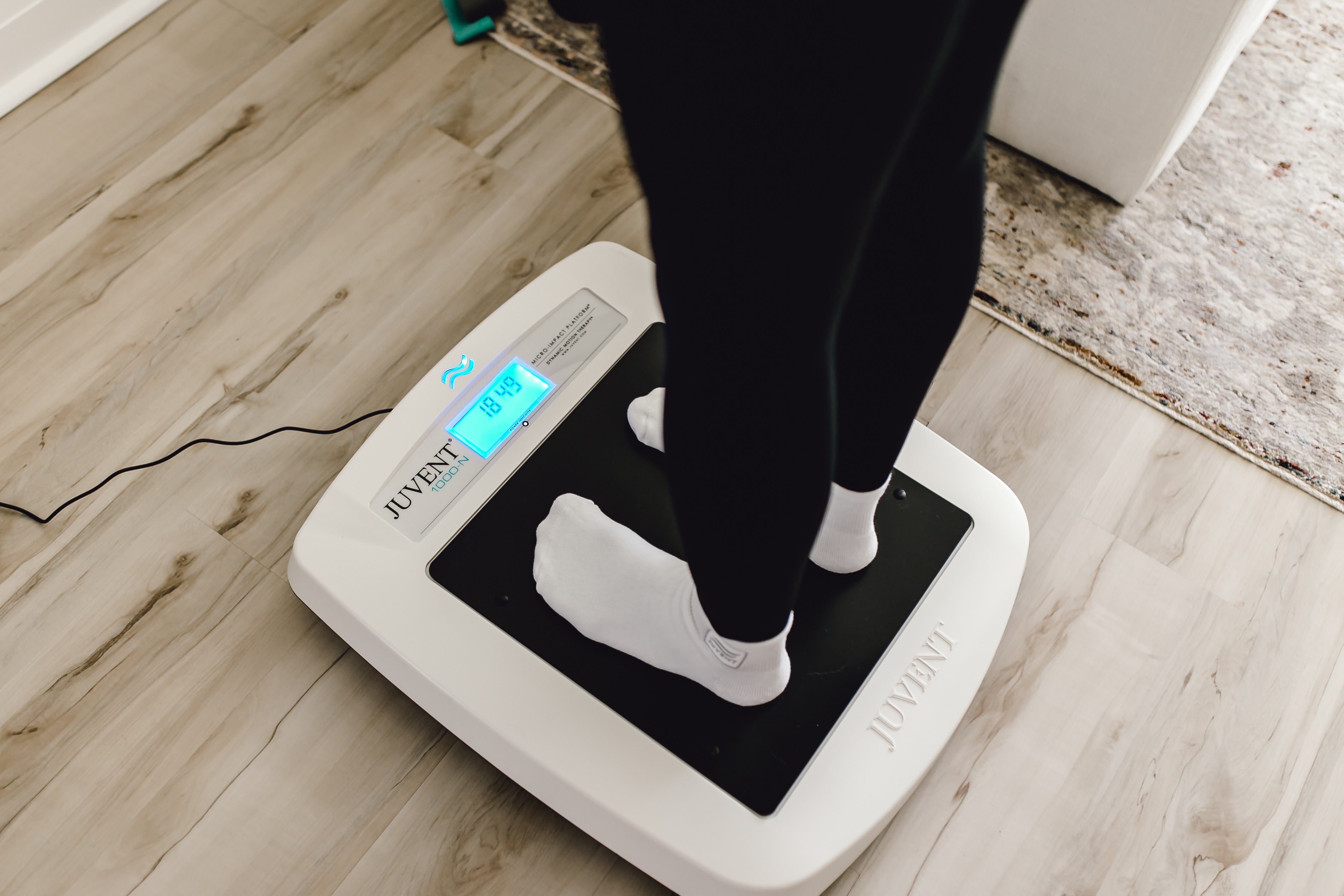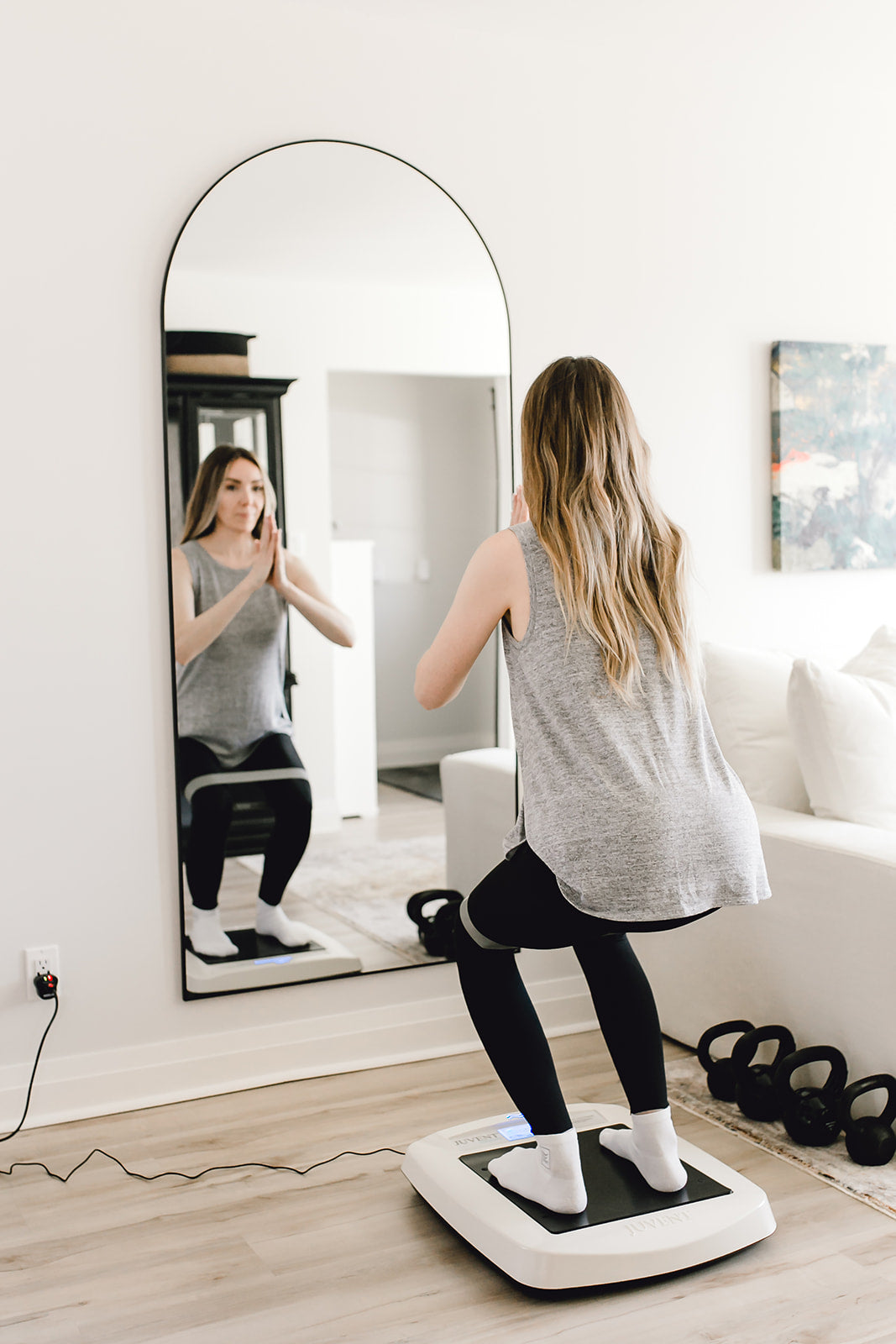- Mechanical stimulation and load bearing exercises can induce vital metabolic pathways (e.g. bone and muscle morphogenesis, endocrine regulation, protein synthesis, and stem cell proliferation) in the human body.
- While controlled low magnitude high-frequency mechanical stimulation has tremendous health benefits, several studies have shown that uncontrolled, high energy, long-term WBV exposure increases risks for low back pain, spinal degeneration, and lumbar intervertebral disc (IVD) herniation.
- Occupational exposure (in excess of ISO/OSHA standards) to WBV through frequent operation of vibrating vehicles are linked to higher incidences of neck pain and brain stem malfunctions.
- Most WBV technologies are not optimized, controlled or limited to accepted safe levels of force for clinical purposes with results varying from not beneficial to detrimental health outcomes.
Low-magnitude High-frequency mechanical stimulation (LMMS)
- Low-magnitude mechanical stimulation (LMMS) is a relatively new mechanical stimulation technology.
- LMMS is applied through the feet, by standing on a platform oscillating at relatively high frequency.
- LMMS is non-invasive and non-pharmacologic with minimal risk for adverse events.
Juvent’s Micro-Impact Platform: The Leading Lmms Technology for Healthcare and Sports Applications
- Juvent Micro-Impact Platform is the result of $45 million of research and development, which has culminated in over 20 patents worldwide.
- Juvent’s unique LMMS reflects a perfect combination of intelligent software, a high-resolution accelerometer, and a precision mechanism that optimizes a signal optimized for each user.
- Unlike whole body vibration(WBV) ‘shakers’ Juvent’s Smart Technology provides precisely controlled micro-impacts by self-adjusting user’s unique resonant frequency, so it only needs 0.3g’s of force to be effective.

Literature Cited:
- Bovenzi M, Hulshof C. An updated review of epidemiological studies on the relationship between exposure to whole-body vibration and low back pain. J Sound Vib. 1998;215:595–613.
- Pope M, Magnusson M, Lundstrom R, et al. Guidelines for whole body vibration health surveillance. J Sound Vib. 2002;253:131–67.
- Gregory DE, Callaghan JP. Does vibration influence the initiation of intervertebral disc herniation? Spine. 36:E225–31.
- Milosavljevic S, Bagheri N, Vasiljev RM, et al. Does daily exposure to whole-body vibration and mechanical shock relate to the prevalence of low back and neck pain in a rural workforce? Ann Occup Hyg. 2012;56:10–7.
- Rehn B, Nilsson T, Lundström R, et al. Neck pain combined with arm pain among professional drivers of forest machines and the association with whole-body vibration exposure. Ergonomics. 2009;52:1240–7.
- Scutter S, Türker KS, Hall R. Headaches and neck pain in farmers. Aust J Rural Health. 1997;5:2–5.
- Luoma K, Riihimäki H, Luukkonen R, et al. Low back pain in relation to lumbar disc degeneration. Spine. 2000;25:487–92.
- Mogil RJ. Effect of Low-Magnitude, High-Frequency Mechanical Stimulation on BMD Among Young Childhood Cancer Survivors: A Randomized Clinical Trial. JAMA Oncol. 2016 Jul 1;2(7):908–14. doi: 10.1001/jamaoncol.2015.6557.
- Chow DH. Low-magnitude high-frequency vibration (LMHFV) enhances bone remodeling in osteoporotic rat femoral fracture healing. J Orthop Res. 2011 May;29(5):746–52. doi: 10.1002/jor.21303.
- Nagaraja MP, Hanjoong Jo. The Role of Mechanical Stimulation in Recovery of Bone Loss—High versus Low Magnitude and Frequency of Force. Life. 2014;4:117–130. doi:10.3390/life4020117.
www.juvent.com Clinical Benefits of Juvent’s Micro-Impact Platform® - 2019©, All Rights Reserved. JR300331-Rev.1 These statements have not been evaluated by the Food and Drug Administration. This product is not intended to diagnose, treat, cure, or prevent any disease. Juvent’s Platform is a Powered Exercise Device.



Share:
CLINICAL BENEFITS OF JUVENT’S MICRO-IMPACT PLATFORM®
HUMAN HEALTH BENEFITS OF LOW MAGNITUDE MECHANICAL STIMULATION (LMMS)